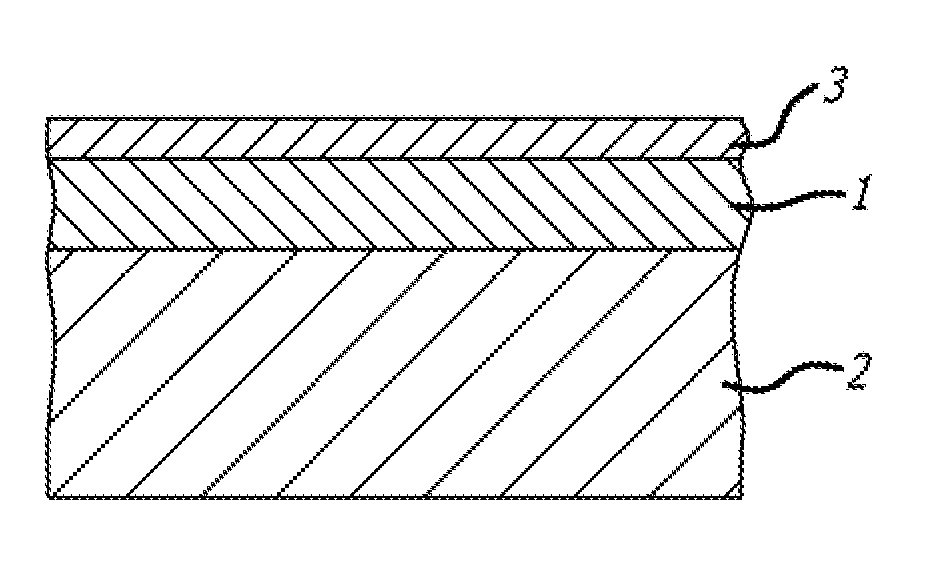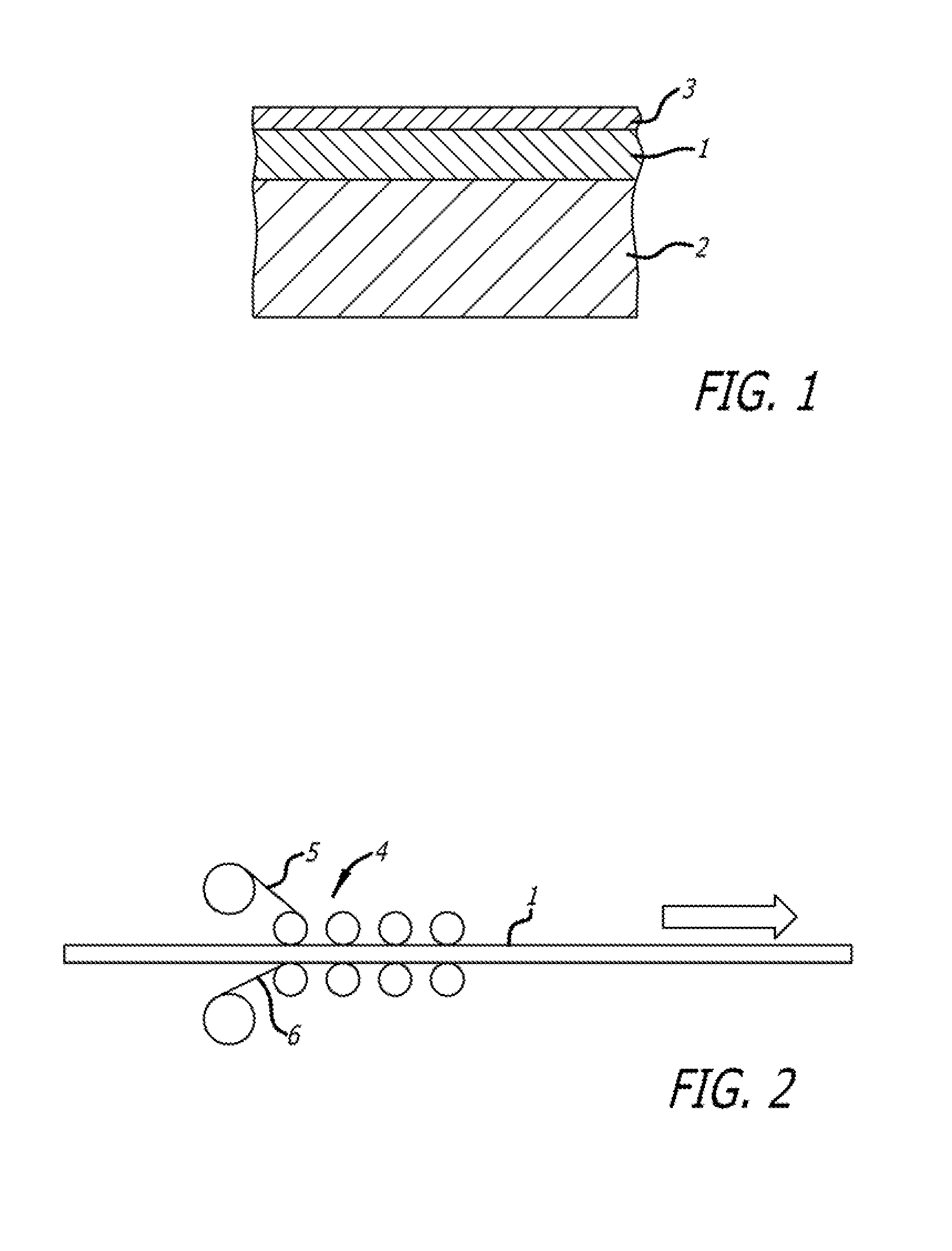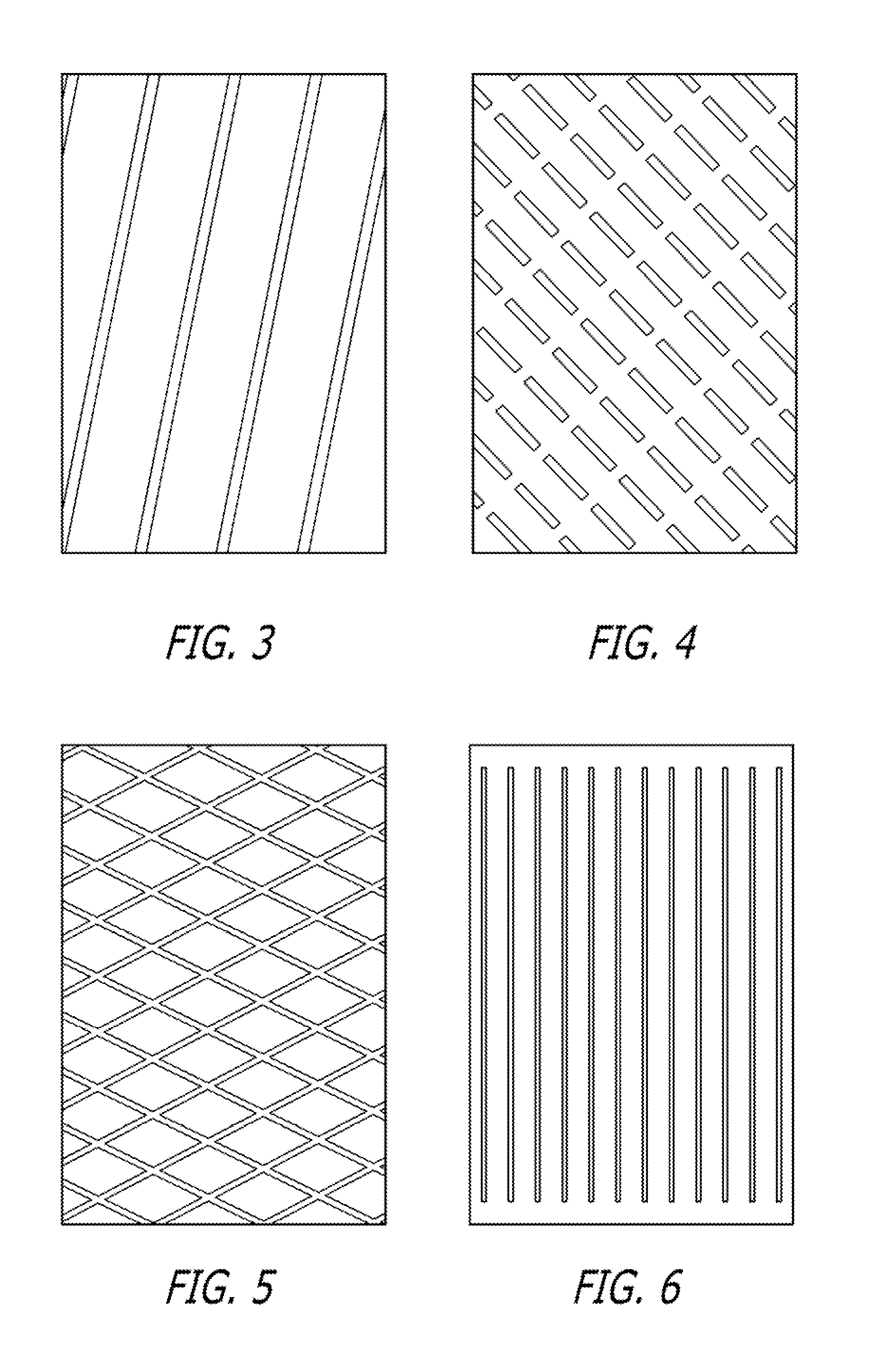Moulding materials
a technology of moulding materials and moulding sheets, which is applied in the direction of synthetic resin layered products, transportation and packaging, coatings, etc., can solve the problems of reduced mechanical integrity of finished products, unidirectional alignment of exposed dry fibers on the outer surface, and the formation of contaminant fibrous debris, etc., to achieve high mechanical integrity
- Summary
- Abstract
- Description
- Claims
- Application Information
AI Technical Summary
Benefits of technology
Problems solved by technology
Method used
Image
Examples
example 1
[0062]A semi-pre-preg material was made at 300 mm wide from unidirectional carbon fiber tows in sheet form of 150 gsm fiber areal weight and 92 gsm heat curable resin matrix on one face. The fiber used was Fortafil® F510-80K and the resin matrix was Hexcel epoxy M9.6. Additional examples were replicated using Tenax® STS-24K fiber and M9.1 resin.
[0063]The processing conditions of temperature, pressure and line speed were such as to cause the resin matrix to penetrate only partially into the carbon fiber layer.
[0064]The resulting product had a continuous tacky resin layer on one face and dry fibers on the opposite second face. The fibers were aligned in the warp direction (longitudinally) with no added weft material. The product had a total weight of 242 gsm with 38% by weight of resin. The second face was freely exposed and in particular had no resin material applied thereto.
example 2
[0065]A semi-pre-preg material was made in like manner to Example 1 at 300 mm wide with M9.6 resin and F510-80K fiber. In addition, transverse lines of 913 resin were applied to the dry face.
[0066]The transverse lines were applied to a release paper using a gavure roll and were then transferred from the paper to the dry face of the semi-preg. The resin applied to the dry face amounted to 2 gsm.
example 3
[0067]A semi-pre-preg material was made at 300 mm wide from unidirectional F510-80K carbon fiber tows in sheet form of 500 gsm fiber areal weight and 280 gsm heat curable M9.6 resin matrix on one face.
[0068]The processing conditions of temperature, pressure and line speed were such as to cause the resin matrix to penetrate only partially into the carbon fiber layer.
[0069]Transverse lines of the same M9.6 resin were applied to the dry face.
[0070]The lines were applied to a release paper using a reverse roll coating process and were then transferred from the paper to the dry face of the semi-preg. The resin applied to the dry face amounted to 20 gsm.
PUM
| Property | Measurement | Unit |
|---|---|---|
| temperature | aaaaa | aaaaa |
| temperature | aaaaa | aaaaa |
| temperatures | aaaaa | aaaaa |
Abstract
Description
Claims
Application Information
 Login to View More
Login to View More - R&D
- Intellectual Property
- Life Sciences
- Materials
- Tech Scout
- Unparalleled Data Quality
- Higher Quality Content
- 60% Fewer Hallucinations
Browse by: Latest US Patents, China's latest patents, Technical Efficacy Thesaurus, Application Domain, Technology Topic, Popular Technical Reports.
© 2025 PatSnap. All rights reserved.Legal|Privacy policy|Modern Slavery Act Transparency Statement|Sitemap|About US| Contact US: help@patsnap.com



